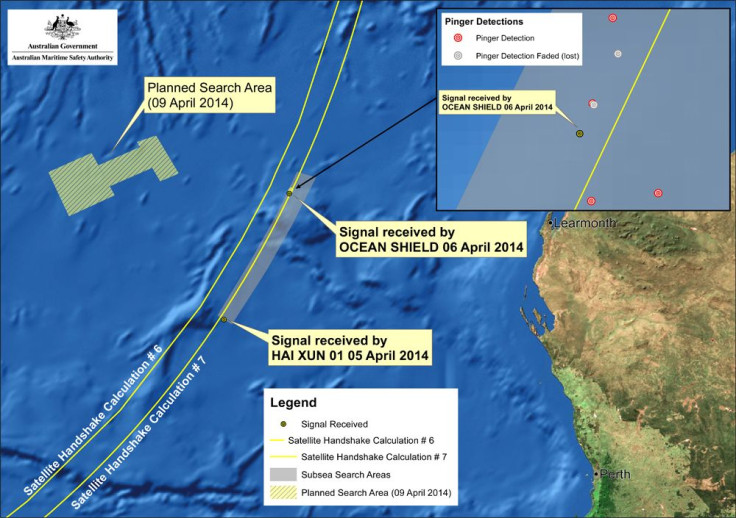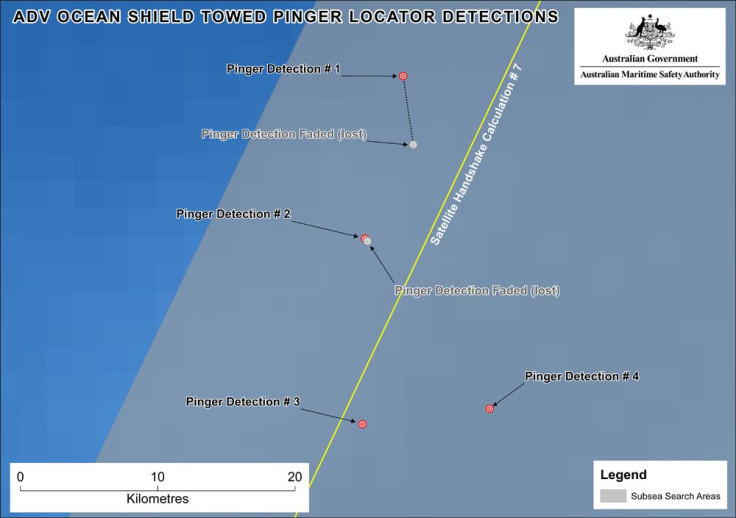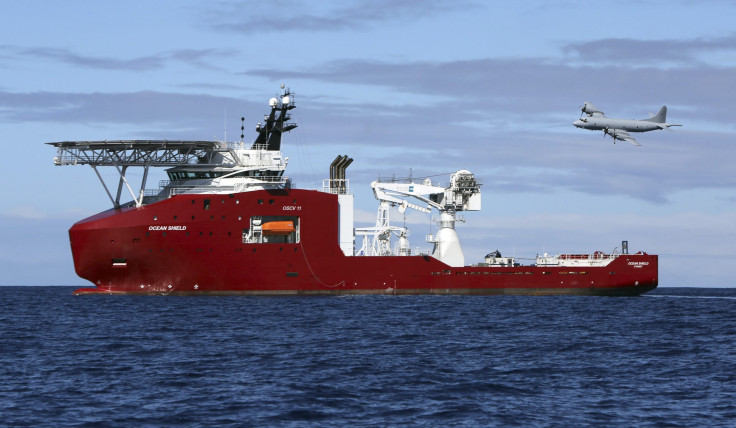Malaysia Airlines Flight MH370: New 'Black Box' Pings Narrow Search Area As Officials Continue Search For Missing Plane [PHOTOS]

More than a month after Malaysia Airlines Flight MH370 went missing, new developments in the multi-nation search for the plane have raised hopes of finding its black box yet again.
In a press conference on Wednesday, officials from the Australian Joint Agency Coordination Center announced that signals consistent with those emitted by aircraft black boxes were reacquired during searches in the south Indian Ocean by the Australian Defense Vessel (ADV) Ocean Shield during search operations late Tuesday afternoon and evening.
The signals were detected on two separate occasions, with one signal held and heard for five minutes and 32 seconds during the Tuesday-afternoon search and seven minutes during the late-night search. The new signal detections will ultimately aid search and rescue teams in narrowing the scope of their search for the black boxes and remains of Flight MH370.

“I believe we are searching in the right area, but we need to visually identify aircraft wreckage before we can confirm with certainty that this is the final resting place of MH370,” head of the Joint Agency Coordination Center, Angus Houston, said during the press conference. “For the sake of the 239 families, this is absolutely imperative.”
While the new signal detections will aid in narrowing the ocean-floor search area for the doomed Boeing 777 jet, further refinement of the information gathered will be needed to find a more precise location of the signals’ origin. Until the search window is further narrowed, search teams have held off on deploying the autonomous underwater vehicle, known as the Bluefin 21, which will eventually be used to scour and map the ocean floor.

Houston emphasized the importance of fine-tuning the search area, due to the fact that the batteries of the black boxes are likely to expire soon:
“So with the batteries likely to fade or fail very shortly, we need to get as much positional data as we can so that we can define a very small search area,” Houston said.
To put it in perspective: Search teams were previously searching a 220,000-square-kilometer (84,943-square-mile) area. The new search area has been further narrowed to 75,000 square kilometers (28,958 square miles).
In addition to current search refinement efforts by the Ocean Shield using the towed pinger locator currently deployed from the ship, Royal Australian Air Force P-3 Orion aircraft have also been tasked with deploying several sonar buoys, which will be used to aid in locating the origin of the acoustic pings, which were detected at the 37.5-kilohertz frequency.

Even with the additional sensors in the narrowed search area, the international team searching for Flight MH370 may potentially face other problems, such as silt covering the debris and absorbing sound emitted by the Boeing 777-200ER’s “black box” beacon.
Despite the problems the task force may encounter, the search continues for Malaysia Airlines Flight MH370, which went missing on March 8 with 227 passengers and 12 crew members on board.
© Copyright IBTimes 2024. All rights reserved.






















